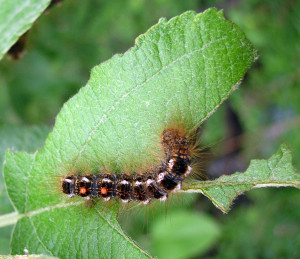
Spring has sprung and gypsy moth caterpillars are active. It is predicted to be a bad year for this invasive pest. The gypsy moth caterpillar is not a fussy eater. It has a preference for leaves of deciduous hardwood trees such as maple, elm, and oak. However, during heavy infestations, competition for food will drive the caterpillar to attack almost any tree or shrub.
Most problems from caterpillar exposures are due to tiny hairs (setae) or actual spines on a caterpillar's body. Some cause allergic reactions. To learn about how to best remove these tiny hairs and to treat a reaction, open this link:
Caterpillars and Treatment of Stings
No comments:
Post a Comment